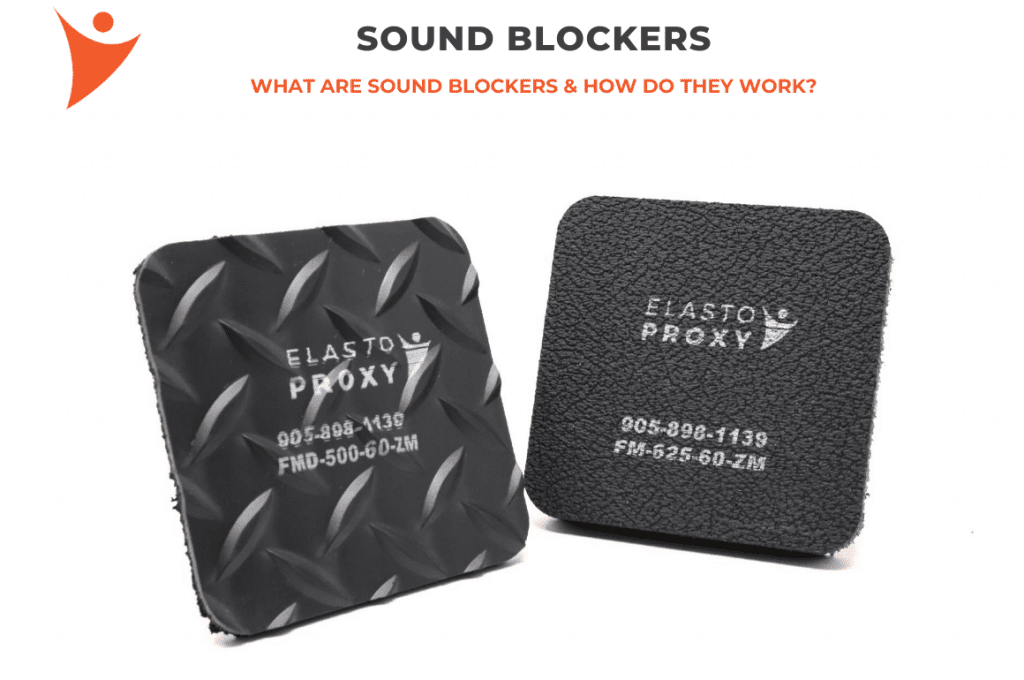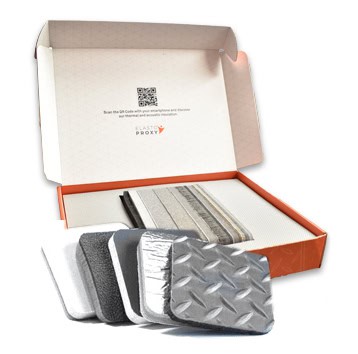Acoustic insulation materials for heavy equipment absorb, block, or dampen unwanted sounds. They are fabricated into headliners, floor mats, and wall panels for the cabin where the operator sits. In diesel-powered equipment, these materials are also used in the engine bay. There, they may be laminated to thermal insulation for protection against both heat and sound.
Elasto Proxy distributes sheets and rolls of insulating materials, but we also transform stock materials into finished products. Heavy equipment manufacturers who buy our ready-to-install solutions save time on their assembly lines. They also save money by reducing material waste and buying all the rubber that they need, including door and window gaskets, from a single source.
Keep reading to learn more, or contact us to request an insulation sample kit.
How to Get the Best Acoustic Insulation Material
Whether you need materials for distribution or fully-fabricated products, Elasto Proxy makes it easy to get the best acoustic insulation. Our 35+ year-old company has built relationships with over 200 suppliers, and we offer a wide variety of materials in various thicknesses. Many are acoustic foam, but others are fibers, fabrics, or solid materials.
Elasto Proxy can help you with material selection. The science of sound is complex, but the right material can reduce the number of decibels (dB) in the cabin and “tune out” specific frequencies measured in Hertz (Hz). We can also help you determine the source, path, and receiver for sound energy, which travels as a wave. Some materials have UL 94 flame ratings or meet other standards.
With our fabricated products, Elasto Proxy can laminate different materials together into sandwich-style structures with application-specific properties. Examples include acoustic insulation that can both absorb and block sounds while dampening vibrations. We cut acoustic insulation to size with water jet equipment and apply pressure-sensitive adhesives (PSAs) for peel-and-stick installation.
From prototyping to production runs, water jet cutting is fast, precise, and tool-free.
Types of Acoustic Insulation Materials
Elasto Proxy distributes and fabricates four major types of acoustic insulation materials.
- Sound absorbing
- Sound blocking
- Sound and vibration damping
- Facings
The following sections describe them.
Clik here to view.

Sound Absorbing Materials
Sound absorbing materials convert sound waves that pass-through into small amounts of heat.
- Polyurethane foam is highly effective at absorbing sound with mid-to-high frequencies. It also supports washdowns and resists ultraviolet (UV) light.
- Polyester fiber is a cost-effective sound absorber that’s moisture-resistant. Compared to polyurethane foam, it provides better resistance to flames, smoke, and UV light.
- Polyethylene foam has closed cells for moisture resistance and structural integrity. It’s lightweight and has a broad temperature range.
- Polyether foam has open cells that allow air to flow through. This helps dissipate sound, but open cells can admit moisture and water.
- Melamine foam combines effective sound absorption with long-term resistance to higher temperatures. It’s a good choice for engine bays.
- Silicone foam is a medium-density cellular material that isolates vibrations, back-and-forth movements that can result in structure-borne noise from parts such as metal frames.
Clik here to view.

Sound Blocking Materials
Sound blocking materials work by bending (diffracting) sound waves.
- Ethylene-vinyl acetate (EVA) blocks mid-frequency range sounds. It’s often used as an under-floor treatment.
- Polyvinyl chloride (PVC) also blocks mid-frequency range sounds. It’s cost-effective, resilient, and used to create sound barrier walls.
- Mass loaded vinyl (MVL) contains tiny particles for added mass to help block sound. It withstands pressing or bending and is available in thin sheets for tight spaces.
Sound Dampening Materials
Sound dampening materials reduce sound energy instead of blocking it. They also reduce vibrations.
- Extruded vinyl is flexible, lightweight, and available in various grades.
- Asphalt-impregnated paperboard is lightweight, waterproof, and wear resistant.
- Fiberglass controls sound reflections within the cabin or engine bay.
Facings
Facings can tune-out specific frequencies, reflect heat, support washdowns, and add decoration.
- Vinyl can absorb low frequencies and is easy to clean.
- Fabrics are used to provide a decorative finish, such as with headliners.
- Metal foil can have raised features that disrupt sound waves.
Clik here to view.

Ask Elasto Proxy for Acoustic Insulation Materials
Elasto Proxy supplies the acoustic insulation materials that heavy equipment manufacturers need. We also offer ready-to-install products for noise reduction, and custom solutions for application-specific challenges. We can store your materials or finished goods in our warehouses, and Elasto Proxy can kit and package your parts in assembly order.
Ready to learn more? Talk to our team.
L’article Acoustic Insulation Materials for Heavy Equipment est apparu en premier sur Elasto Proxy.